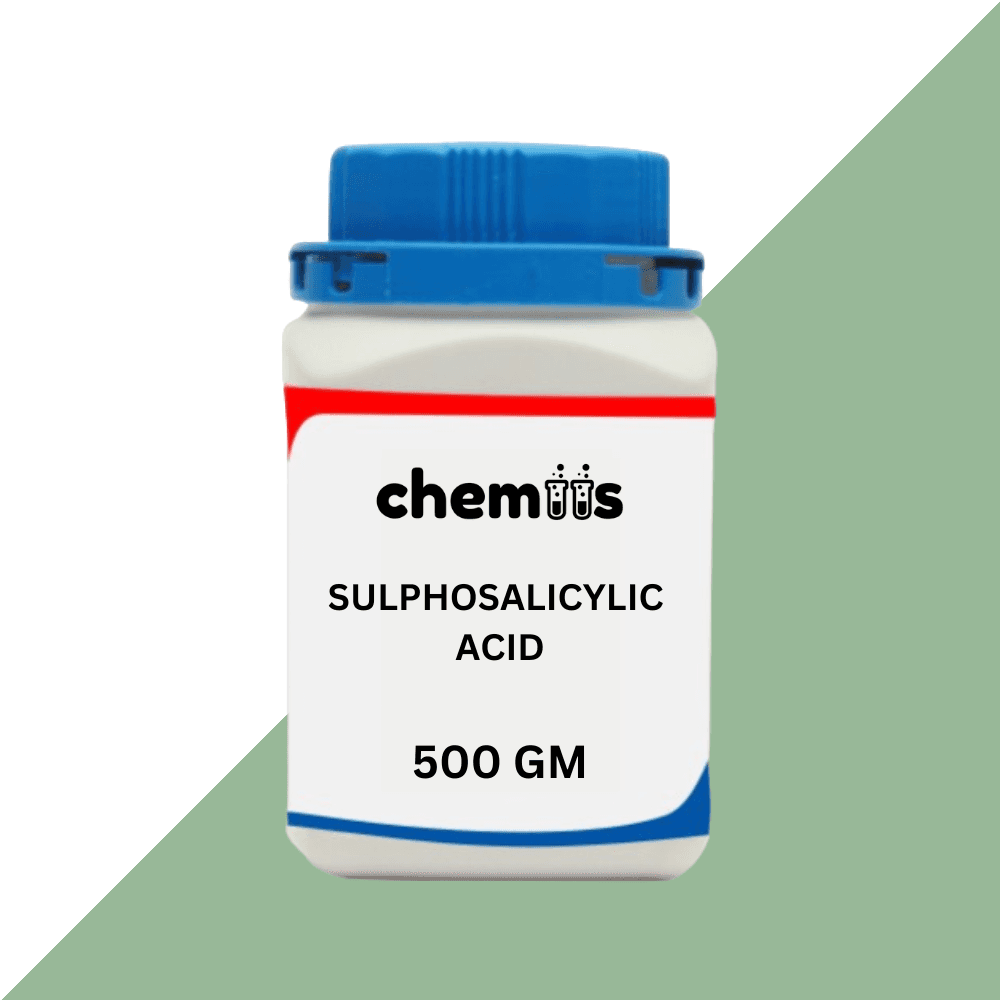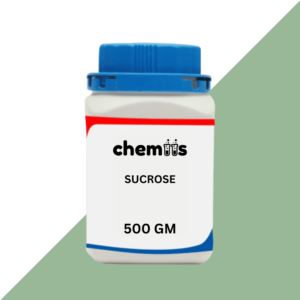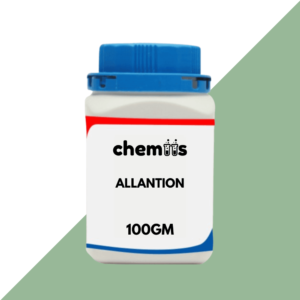Sulphosalicylic Acid, also known as 2-Hydroxybenzenesulfonic acid, is an aromatic compound that combines both salicylic acid and sulfonic acid functional groups. It is primarily used in laboratory testing and in chemical synthesis due to its ability to form stable complexes with proteins, making it a valuable reagent for protein precipitation. Sulphosalicylic Acid also plays an important role in pharmaceutical formulations, especially in the production of certain therapeutic agents and as a key intermediate in organic synthesis.
Applications of Sulphosalicylic Acid:
1. Laboratory and Analytical Applications:
- Protein Precipitation: Sulphosalicylic Acid is commonly used in protein precipitation techniques. It reacts with proteins in a sample to form insoluble complexes that can then be removed by centrifugation. This property makes it valuable in laboratories for isolating proteins and purifying biological samples. It is often used in diagnostic tests for proteinuria (excess protein in urine) to detect kidney disease.
- Detection of Urinary Proteins: One of the most common uses of Sulphosalicylic Acid is in clinical chemistry to test for the presence of proteins in urine. A urine sample is mixed with Sulphosalicylic Acid, and if proteins are present, a precipitate forms, which is then measured. This test is often used as an initial screening for kidney diseases or disorders such as nephrotic syndrome.
- Reagent in Chemical Reactions: Sulphosalicylic Acid is used as a reagent in organic synthesis, particularly in reactions where sulfonation or hydroxylation of aromatic compounds is involved. It serves as a versatile building block in the synthesis of other compounds, especially those used in pharmaceutical and chemical industries.
2. Pharmaceutical Applications:
- Intermediate in Drug Synthesis: Sulphosalicylic Acid is an important intermediate in the synthesis of various pharmaceutical compounds. It is used in the preparation of certain sulfonamide drugs and in the production of other salicylic acid derivatives, which have anti-inflammatory and analgesic properties.
- Antioxidant Properties: Due to its chemical structure, Sulphosalicylic Acid is sometimes studied for its potential antioxidant properties, which can be valuable in the formulation of pharmaceutical products aimed at treating oxidative stress-related conditions.
3. Cosmetic and Personal Care Products:
- Use in Skincare: Sulphosalicylic Acid has mild exfoliating properties due to its salicylic acid content. It is sometimes included in skincare formulations for treating acne, as it can help reduce the appearance of pimples by promoting exfoliation and reducing inflammation.
- Anti-inflammatory Effects: Given the presence of salicylic acid in its structure, Sulphosalicylic Acid can be utilized in formulations aimed at calming skin inflammation. It is especially helpful in treating conditions like acne and other minor skin irritations.
4. Chemical Synthesis and Industrial Use:
- Intermediate in Dye Synthesis: Sulphosalicylic Acid is sometimes used as a precursor in the synthesis of certain azo dyes. It reacts with diazonium salts to form azo compounds, which are widely used as dyes in the textile, food, and leather industries. These dyes are prized for their colorfastness and variety.
- Manufacture of Detergents: Sulphosalicylic Acid can be involved in the synthesis of surfactants and detergents. Its sulfonic acid group is reactive and can be used in the production of detergents that are effective in both household and industrial cleaning applications.
Safety with Sulphosalicylic Acid:
Although Sulphosalicylic Acid is considered relatively safe when handled properly, it is important to follow appropriate safety precautions to avoid potential health hazards. The following safety guidelines should be adhered to:
- Skin and Eye Irritation: Sulphosalicylic Acid can cause irritation to the skin and eyes upon contact. If it comes into contact with skin or eyes, immediately wash the affected area with plenty of water. If irritation persists, seek medical attention.
- Inhalation Risk: The dust of Sulphosalicylic Acid should not be inhaled, as it can irritate the respiratory tract. Ensure that adequate ventilation is in place when handling the substance, especially in powdered form. If inhaled, move to fresh air and seek medical advice if any symptoms persist.
- Handling and Storage: Sulphosalicylic Acid should be stored in a cool, dry, and well-ventilated area away from incompatible materials, such as strong oxidizing agents. The container should be tightly sealed to avoid contamination and degradation of the compound.
- Personal Protective Equipment (PPE): Wear suitable PPE, such as gloves, safety goggles, and lab coats, when handling Sulphosalicylic Acid. Protective equipment should be inspected for damage before use, and it should be replaced if damaged or worn out.
- Disposal: Sulphosalicylic Acid should be disposed of in accordance with local hazardous waste disposal regulations. It should not be discarded in normal waste systems. Use a certified disposal service to ensure that the chemical is disposed of safely and without environmental harm.
- Environmental Impact: Sulphosalicylic Acid is not highly toxic to the environment; however, care should be taken to prevent it from entering waterways or soil. Follow all local guidelines for safe disposal to minimize environmental impact.
- Accidental Exposure: In case of accidental exposure, seek immediate medical attention. If inhaled, exposed to eyes, or ingested, contact a healthcare professional or poison control center immediately. Provide first-aid treatment based on the nature of the exposure (e.g., flushing eyes with water, moving to fresh air, or inducing vomiting if necessary).








Fatima Noor (verified owner) –
Reasonably priced.
Nikhil Malhotra (verified owner) –
Affordable and effective.
Kripa Mehta (verified owner) –
Quick and safe delivery.
Shreyas Rao (verified owner) –
Well-labeled products.
Ankur Tyagi (verified owner) –
Good service.
Pooja Sinha (verified owner) –
Reasonably priced.
Hitesh Suri (verified owner) –
Satisfied with the results.
Hitesh Suri (verified owner) –
Highly reliable platform.
Chirag Vora (verified owner) –
Product arrived on time.
Bhavika Shah (verified owner) –
Easy to find what I wanted.